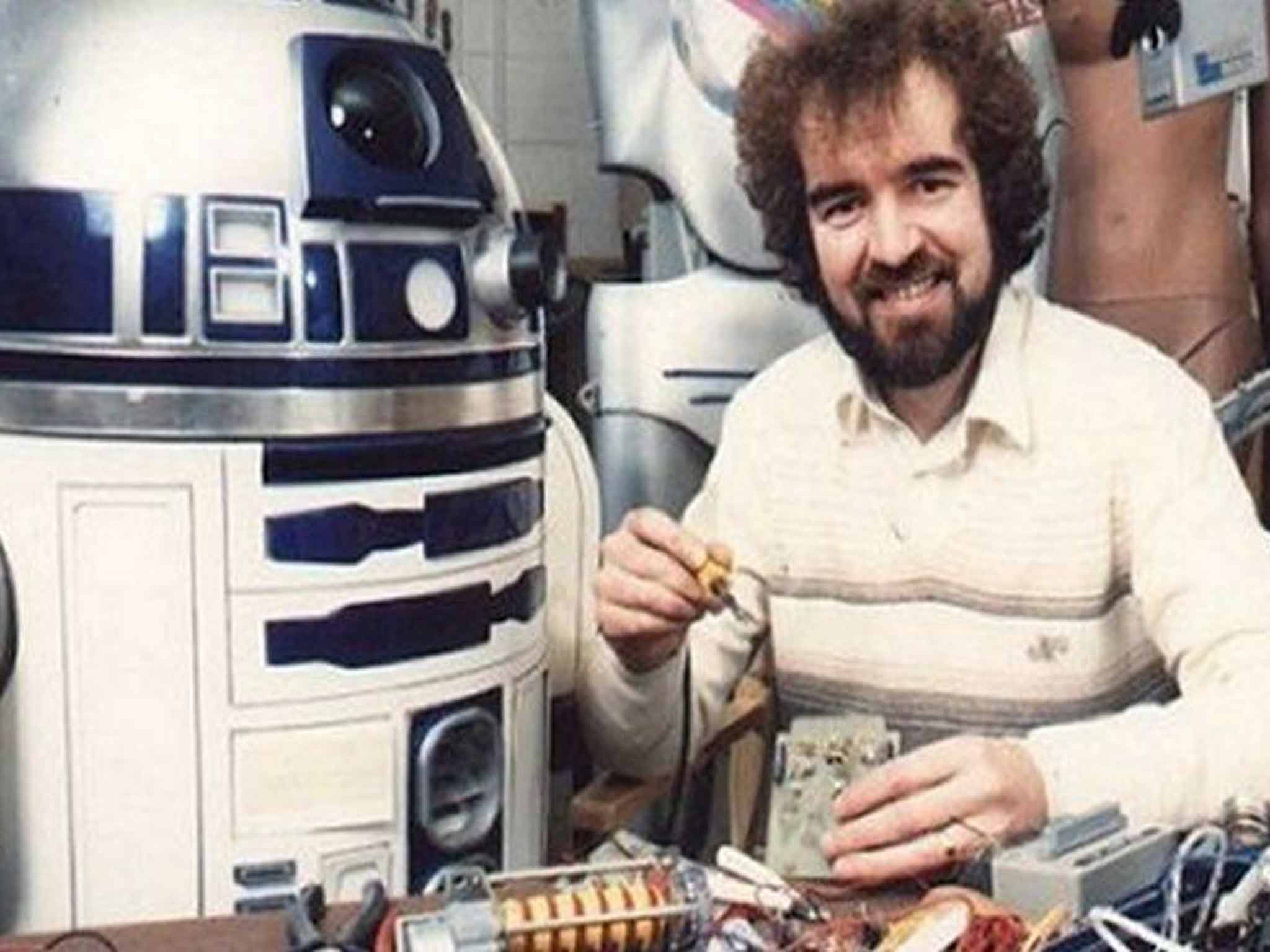Tony Dyson: Special effects expert best known for creating R2-D2, the celebrated robot from 'Star Wars'
Dyson designed 36 model spacemen, complete with jetpacks and laser guns, for an especially memorable space fight scene in the James Bond film Moonraker

Your support helps us to tell the story
From reproductive rights to climate change to Big Tech, The Independent is on the ground when the story is developing. Whether it's investigating the financials of Elon Musk's pro-Trump PAC or producing our latest documentary, 'The A Word', which shines a light on the American women fighting for reproductive rights, we know how important it is to parse out the facts from the messaging.
At such a critical moment in US history, we need reporters on the ground. Your donation allows us to keep sending journalists to speak to both sides of the story.
The Independent is trusted by Americans across the entire political spectrum. And unlike many other quality news outlets, we choose not to lock Americans out of our reporting and analysis with paywalls. We believe quality journalism should be available to everyone, paid for by those who can afford it.
Your support makes all the difference.Tony Dyson, who has died aged 68, was the animatronics expert behind one of the best known robotic film stars of all time, R2-D2. From his appearance in Star Wars: A New Hope, released in 1977, to last year's return to the screen for its seventh episode, R2-D2 remained a firm favourite with audiences. His diminutive size, cheeky manner and banter with other characters, especially C-3PO, much endeared him to fans of the Star Wars series.
The renowned robot's name originates from a chance remark made by the Star Wars sound editor Walter Murch, in asking for Reel 2, Dialogue Track 2, abbreviated to R2-D2, which had been overheard by the film's director, George Lucas. Lucas suggested whimsically that it would make a good name for a robot...
Basing his work on a design by Ralph McQuarrie (Independent obituary, 20 March 2012), who also conceived Chewbacca and C-3PO for the Star Wars films, Dyson was given the task of turning the R2-D2 drawings into physical reality. John Jostins, who had just started working with Dyson, recalled, “At that time, the White Horse Toy Company was only famous for making rocking horses. The story goes that George Lucas had seen one at a show in the States and decided on the spot that its creator should build R2-D2. So this tiny company in a village in the Vale of the White Horse was tasked with bringing a major movie character to life.”
Dyson had fond memories of the time: “We were given just five months to complete the project and I can honestly say it was one of the most exciting periods of my life.” Researching suitable materials, he discovered an air-conditioning unit from a decommissioned aeroplane and used that to define the shape of the R2-D2 body.
In all Dyson built eight versions of the robot to be used in the original Star Wars trilogy. Of these, six were operated by remote control and two constructed to house the 3ft 8in actor and former circus performer, Kenny Baker. “During the first few days, it would take half an hour just to line up the three screws that kept the two parts of the head together,” Baker recalled in a 1995 interview. “You can imagine what it felt, and sounded like, for me. It was just like being inside a Rubik's cube with people on the outside arguing over the instructions.”
Such has been R2-D2's impact that in 2013 the Smithsonian Institution recognised it as one of the 101 Objects That Made America“.
Dyson also worked in animatronics for stage and advertising. One of his favourites was Snooty, an oversized animated fox which co-starred on tour with Jim Davidson. “It had been my dream to be on the Oxford stage as a child,” Dyson recalled, “and that is exactly what happened, at the end of the show each night the star, Jim Davidson, would call me on stage to take a bow for Snooty.”
For Moonraker (1979), the 11th film in the James Bond series, Dyson designed 36 model spacemen, complete with jetpacks and laser guns, for an especially memorable space fight scene. Then, in an advertisement for Sony in 1985 he created a robot, voiced by John Cleese and with his famed Ministry of Silly Walks stride, to showcase the company's new CD player and give a taste of what a future robotic home entertainment system might bring. The daring yet funny design gained Dyson an Emmy nomination.
Born in Dewsbury, West Yorkshire in 1947, Dyson grew up in Abingdon, Oxfordshire, where he attended Straton House School. He founded the White Horse Toy Company, building rocking horses, before being discovered by Hollywood. He had lived on the Maltese island of Gozo since the 1990s but had not been seen by friends for a number of days. His body was found at his home by Maltese police, who said, “Foul play has been excluded so far.”
His last public appearance was in the Netherlands on 1 March for an event organised by TheComputerCompany (TCC), at which he presented ideas for the future. He described his vision of a computer-based virtual robot which could be taught to manage its owner's professional life by thinking and acting like the owner. TCC chief executive, Edward Goessens, told The Independent, “It was very nice meeting him, I really got to know his thoughts and understand his vision, which was very much thinking of the future. He created R2-D2 at a time when no one thought much about robots, and he was doing the same for the next generation of robots.”
Anthony John Dyson, special effects expert: born Dewsbury, West Yorkshire 13 April 1947; died Gozo, Malta c. 3 March 2016.
Join our commenting forum
Join thought-provoking conversations, follow other Independent readers and see their replies
Comments